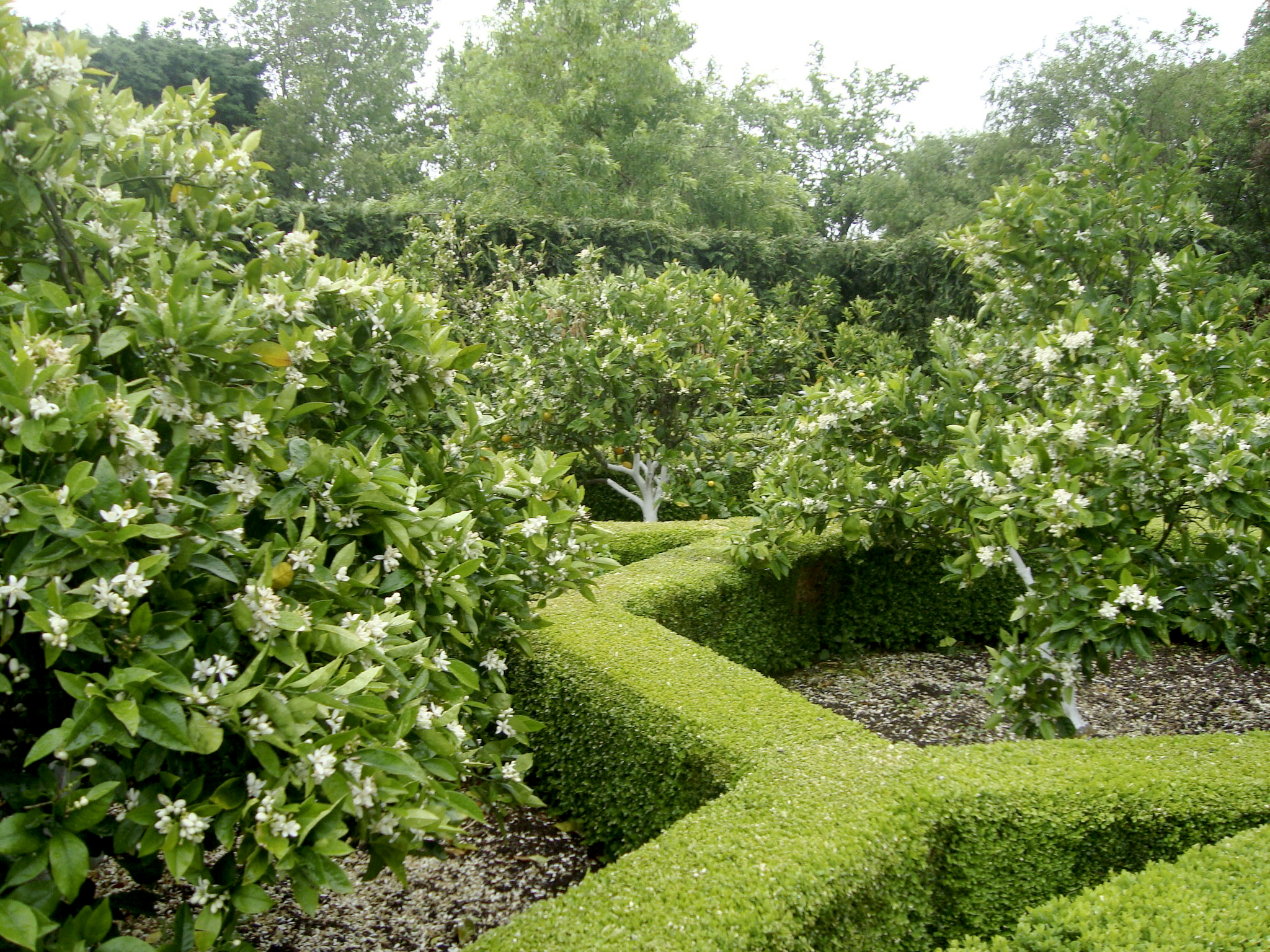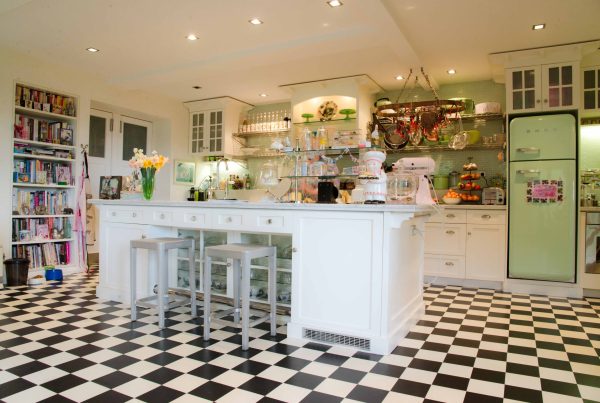
A clipped box offsets citrus trees at Winterhome in Kekerengu, at the Marlborough Garden Festival; a larger hedge behind gives shelter.
Every garden needs good boundaries. And while any basic fence can provide shelter and privacy, a well-planted boundary hedge has added benefits of beauty, fragrance, fruit or flowers, and habitat for birds, bees and beneficial bugs.

A more informal mixed hedgerow could include roses like this white Rosa rugosa, and herbs like the Santolina in front, at Pauatahanui graveyard.
When we began Te Rito community gardens in 2010, the first thing we planted on the bare-grass Kenepuru site was an encircling hedgerow (supported by a simple, low, one-horizontal-pole fence). Plants chosen for toughness, prunability, beauty and usefulness (and for an ultimate height under 2m) included rosemary, Bourbon roses, wormwood, salvias and feijoas, interplanted with flax (for birds and fibre), and with lower-growing herbs (lemon balm, thyme, lavender) and self-sowers such as hollyhocks and evening primrose filling any gaps.
This border, about 1.5m wide, gives wind protection for the interior vegetable beds as well as food and shelter for birds and beneficial insects, herbs for tea, and cuttings material for future propagation. Mixed hedgerows like this, made from a variety of plants, can also include berries, flowers or nuts.
Some gardeners prefer a more uniform hedge. A beautifully clipped green hedge needs maintenance several times over the growing season, but makes a lovely contrast to more informal garden areas. Choose something not too vigorous, so it won’t outgrow its welcome. Plants that sprout readily from bare wood are best, to avoid bare patches along the bottom. Densely branching, small-leaved shrubs are generally easier to clip and shape.
If wind is an issue in your garden, hedging provides better shelter than rigid walls, absorbing wind energy rather than deflecting it into wind tunnels. Many natives are good for this job — flax, korokio, taupata, pittosporums or griselinias. If the prevailing wind is northerly, choose plants that will stay low enough not to block too much sun. Likewise, use a low hedge such as lavender to create an extra layer of shelter around vegetables.
If you just have a patio or balcony wall, it too can be covered by greenery in the form of beans or passionfruit (in sun), or small-leaved fig (in shade).
Whatever hedge you choose, autumn is the ideal planting time, allowing for good root growth before winter hits. Add lots of compost and mulch well — this hedge might be around for years, so it needs a good start.
For flowers, bees and birds: rosemary (Rosmarinus officinalis) is lovely but can become leggy; roses (e.g. Rosa rugosa) provide hips and an added barbed-wire effect; feijoas will fruit, but only on the non-windy side; salvias provide late flowers (pineapple sage, Salvia elegans, will flower all winter); raspberries, hazels, thornless blackberries (less vigorous than their prickly cousins).
For clipping: box (Buxus sempervirens) is slow-growing, but you’ll be glad of that in the long term; bay (Laurus nobilis) is tough but suckering — good by a driveway, but keep it clear of garden beds; korokio (Corokia spp.), especially ‘Frosted Chocolate’, forms gentle ‘clouds’ if left unclipped, as does Muehlenbeckia astonii (known in England as dots-in-the-air).
For a shady fenceline: kawakawa (Macropiper excelsum) grows well in shade, and is easily pruned to shoot away if bare spots appear.




